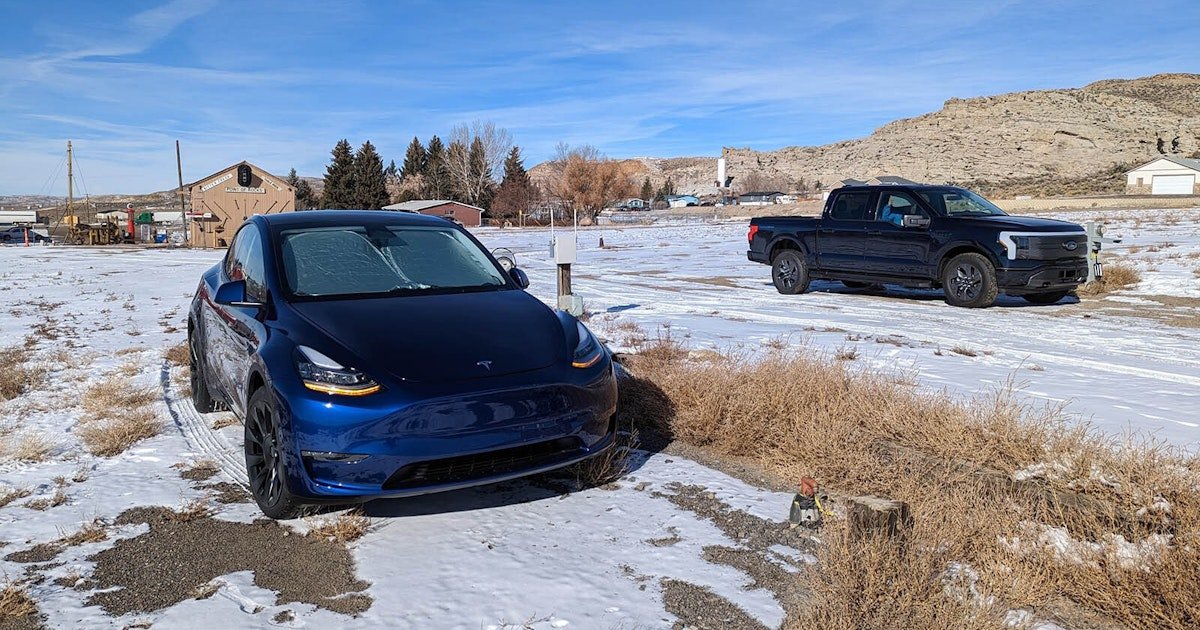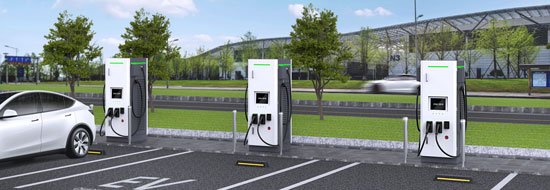The Wyoming Department of Transportation may be getting a jumpstart to build out a multimillion-dollar network of electric vehicle charging stations across the state with federal money, but concerns continue to linger that the effort may be losing some steam.
WYDOT recently got a jolt to move forward with its proposed plans to build charging stations from the Federal Highway Administration – even though nothing has yet been built and solicitations to bring on board contractors for a statewide charging network haven’t yet happened.
Nonetheless, some concerns have arisen over the pace of Wyoming’s rollout, perhaps because it only has 800 registered EV owners, among the lowest of any state.
Additionally, reports emerged this weekend that the Biden administration may be putting the brakes on stringent emission standards that could spur growth in EV sales.
The new thinking is designed to let automakers manufacture a smaller percentage of their fleets as EVs by 2030 than originally forecast.
Wyoming hasn’t had an easy go of getting its EV charging station program off the ground. This is partially why WYDOT paused the program last May and began a reboot in December to regain traction as it sorted out its own internal disruptions.
In the meantime, some in Wyoming are getting creative to accommodate people driving EVs through the Cowboy State looking to charge up.
The owner of an RV park along I-80 told Cowboy State Daily last month that he’s rigged a couple of his RV power outlets for EVs to use in an emergency. In fact, most that end up using them are towed in, he said.
Only About 6 Comments
The departure of key WYDOT managers, concerns over profit sharing on investments, building along main interstate roads and other worries were cited by WYDOT for the temporary halt.
To get things going again, WYDOT recently went out to the public to collect more comments on suggestions to improve the program. About a half dozen parties submitted comments to the agency by the end of last month’s deadline with their thoughts about what the program should proceed.
“I’m frustrated,” said Justin Wood, an entrepreneur from northeastern Wyoming in Sundance, who has bought up property in downtown and throughout Crook County along U.S. Route 14 that runs from Devils Tower to Black Hills in South Dakota.
“The biggest barrier to EV charging station development is the complicated application process, and how the Wyoming weather may impact the vehicles,” wrote Wood, who said he can’t get WYDOT to reach out to him for help in navigating the procurement system.
“I haven’t heard anything from anyone,” he told Cowboy State Daily.
“The city (Sundance) is growing, and I want to expand with it,” said Wood. “I have really good locations for charging stations in the downtown area, close to where people walk to restaurants.”

A Variety Of Proposals
A full review is still underway on next steps in the EV build-out process in Wyoming, said WYDOT spokeswoman Jordan Young in recent comments to Cowboy State Daily.
Despite the noise of the slow start, Young said that the program is moving forward.
She cited a Feb. 1 letter to WYDOT Director Darin Westby from the FHA approving Wyoming’s deployment plan for the second fiscal year that began Oct. 1, releasing an obligation to spend $5 million.
Solicitations to build the charging stations every 50 miles on the interstate roads in Wyoming haven’t been issued as of yet.
The responses submitted by interested parties in building the EV charging network to WYDOT last month came from varied industries, including EV charging companies, a utility company, one landowner who wants to host EV stations, and EV charging companies that want to pull power from a battery rather than directly from the electrical grid.
In the past, some potential EV charging owners said that they struggled with how to pay for the charging stations despite federal backing. In addition, a change in the management of the program left a void in who would oversee the program.
Stuck With A Big Bill?
Three months before the program was paused last year, Wyoming’s head of transportation, Luke Reiner, retired after four years in the role amid staffing challenges in the agency.
Additionally, Jesse Kirchmeier, special projects officer with WYDOT and a contract employee who helped build out the EV infrastructure project with the federal government, left the department.
The program was placed on hold over concerns the state could be stuck with a hefty bill if unprofitable stations were abandoned.
WYDOT is working with the FHA’s National Electric Vehicle Infrastructure (NEVI) program, which has offered $24 million to build out 17 charging stations along interstate corridors on I-80, I-25 and I-90.
The program requires a 20% match from private businesses, which would build and operate the stations.
The feds would kick in money to support the stations’ operations for up to five years. The program required no state money.
The comments submitted to WYODT last month echoed some of the same concerns expressed last year.
Can Wyoming Support It?
Joseph Roth, vice president of member service with Sundance-based Powder River Energy Corp., wrote in his comments to WYDOT that the biggest challenges to implementing NEVI sites in Wyoming relate to low population density, limited EV adoption compared to other states, the significant upfront investments in the infrastructure and the issues related to the transmission grid stability needed to handle increased demand from charging stations, especially in rural areas.
“The return on investment may be less attractive for investors,” Roth said.
State Rep. Mike Yin, president and founder of OtterSpace LLC in Jackson, Wyoming, wrote that he’s interested in developing charging stations in the “tourism corridors” that serve Yellowstone and Grand Teton National Parks, as well as within the parks themselves.
OtterSpace operates a handful of charging stations that serve traveling tourists in Pinedale, Lander and Dubois, and has a partnership with the city of Laramie.
Potential barriers relate to the size of the investment needed to meet NEVI standards on large power demand from each charging station, as well as the requirement to only build the stations along interstates, Yin wrote.
He urged more flexibility to “target areas” where EV traffic exists along tourism corridors.
Wood, who bought Sundance area property with money earned as a mechanic and tree trimmer over the past few decades, said that NEVI communication to small businesses needs to be improved.
“Everything just seems very vague,” he said. “They want this stuff and for us to support it, but communication is horrible.”
Pat Maio can be reached at pat@cowboystatedaily.com.
[ad_2]
Source link




